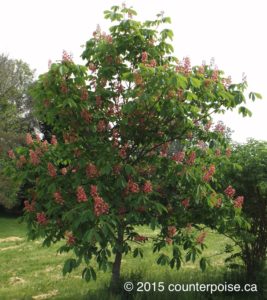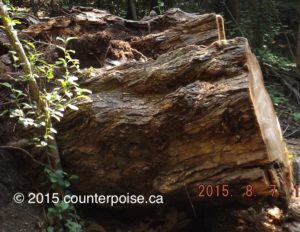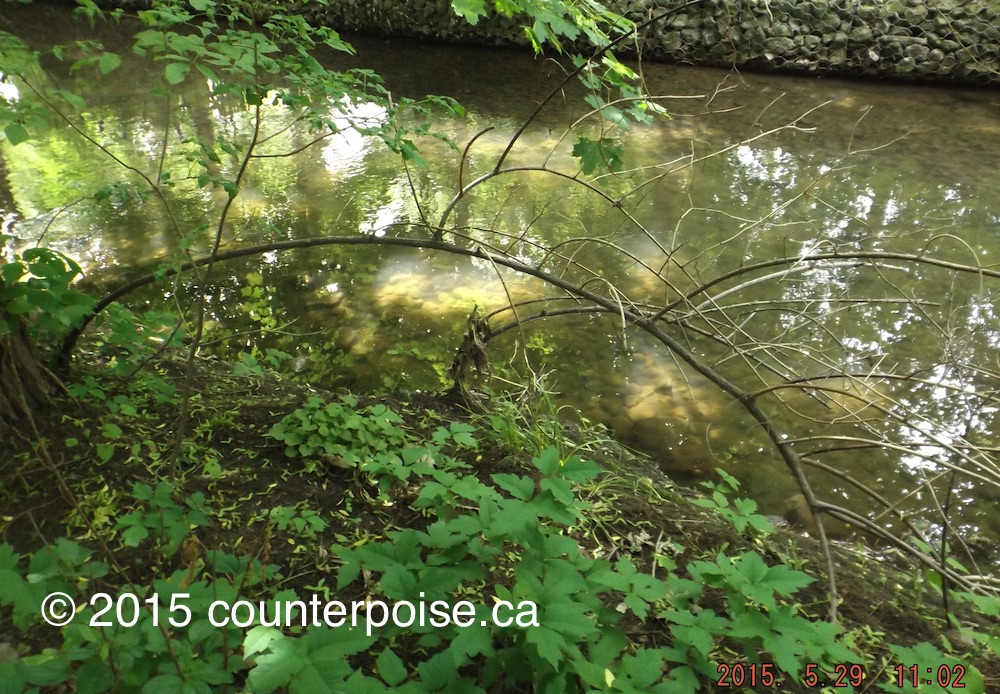Disclaimer: my references to the writings of other people–both indigenous and non-indigenous–do not in any way imply that they share my views on this matter. The opinions expressed here are my own, and do not necessarily represent those of my family, friends of associates.
Note 1: the page numbers in square brackets refer to page numbers in the Truth and Reconciliation Commission (TRC) executive summary. If “Rec.” and a number follow a page number, it refers to a specific TRC summary recommendation.
Note 2: the nature photos, which I took during walks in my neighbourhood, have nothing to do with the content of this post. I found working on this post to be so mentally exhausting, that I sometimes recharged by playing slideshows of these images.
A. Introduction
According to the Truth and Reconciliation Commission of Canada (TRC)’s “Frequently Asked Questions” section of their website (trc.ca), the commission’s mandate “is to inform Canadians about what happened at the Indian Residential Schools (IRS). The Commission will document the truth of survivors, families, communities and anyone personally affected by the IRS experience.” The 382-page executive summary of the final report was released on June 2, 2015 (the multi-volume final report is supposed to follow around December 2015). This post is my critique of the summary.
Metis Chelsea Vowel and other aboriginals have complained that some who have written about the TRC summary have not taken the time to examine it thoroughly. But I can confirm that I reviewed every page, took voluminous notes, and did extensive research before I started working on this post.
My heart goes out to those who suffered abuse at the schools, who lost the connection to their culture, and whose families were torn apart by the experience. I have witnessed natives being treated in a demeaning and exploitative manner, so I have some idea how terrible it must have been. It is good that, through the TRC, survivors have had an opportunity to inform non-aboriginal Canadians about what happened to them, and why many aspects of the residential schools experience (1849-1996) were counterproductive.
Nevertheless, I find the TRC summary overemphasizes the negative and under-reports the positive. It sometimes goes into detail about constructive outcomes for students in terms of the arts, music and sports, but pays very little attention to the academic and leadership accomplishments of quite a few graduates.
 |
| Branch near creek, London, Ontario, May 29, 2015 |
B. My Background With Indigenous Issues
From 1975 to 1987, I worked primarily in native organizations in Southern and Northern Ontario and the Northwest Territories. Quite a few of the people I worked with were residential school survivors, and I sometimes heard stories from them about the abuse they had suffered.
I was, however, also aware of this issue much earlier, due to the fact that my parents, Jay Peterson (1920-1976), and Charles T. Peterson (1913-2007), got involved with aboriginal issues in 1958, when I was six. From the mid-1960s onwards, survivors sometimes told me harrowing anecdotes, such as getting the hair on their heads shaved off if they spoke in their native language.
I have a one-page university program admission questionnaire, across which an aboriginal woman wrote that she refused “to be part of an apparatus” that was damaging her people She closed with what she thought the program really thought of her: the number she had been assigned at residential school. Although it is undated, I believe she wrote it in the late 1960s. Am assuming because it is in my mother’s files that she gave it to my mother.
But a greater percentage of my mother’s aboriginal files contain positive material, such as photos and news clippings of craftspeople either displaying their artistry, or of the crafts themselves. This is because my mother was impressed by the creative ability of many indigenous peoples. She frequently visited reserves, and I sometimes accompanied her. She bought crafts, brought the items back to town, sold them, returned to the reserve, and gave the money to the creators. A Chippewa woman, now deceased, recounted how my mother would arrive on the reserve “with the grease from the roads in her hair.”
In addition, my mother arranged for artisans to come to London, Ontario, to demonstrate or sell their crafts, e.g., when she was on the board of the Western Fair Association. As a result of her enthusiasm, I developed a deep appreciation for native people’s creative abilities. I treasure the many types of aboriginal art I have in my home, some of which originally belonged to her.
It is therefore not surprising that the parts of the TRC summary that upset me the most were the ones that chronicled how aboriginal clothing and other cultural symbols were thrown in the garbage or otherwise disparaged [e.g., p. 44, 86]. In fact, there were numerous times when I broke down and wept in horror. Of course, I was also upset by the many other examples of mistreatment. But I sense the actual destruction of cultural property must have dealt a particularly disastrous blow.
 |
| Horse Chestnut flowers, May 29, 2015 |
C. Maria Campbell’s Input Not Covered in Summary
Although there are a number of references in the report to the 2014 Traditional Keepers Forum, which was held at the University of Manitoba, there is no mention of input from Metis author Maria Campbell. She had recently done research regarding violence against aboriginal women going back to the 1600s (Trudeau Fellow, 2010). She contended it was the “role of the commission” to look into the way aboriginal men have contributed to the violence. She recommended that men take action at the community level, and there be less focus on expecting government to solve the problems.
One of the TRC commissioners, Marie Wilson, told Campbell that she honoured her outrage and the challenge it presented to the men.
I was really glad to read this, and was looking forward to seeing Campbell’s views covered in the summary. Alas, there was no mention of what she said at all. Indeed, there is no discussion of any traditional factors that might lead some aboriginal men to become violent towards women, even though it is well-documented that a few tribes historically did not always treat their women with respect. Since one of the recommendations is for an inquiry into missing and murdered aboriginal women and girls [p. 224; Rec. 41 i)], I found this omission particularly disasppointing.
The TRC report gives the impression that life before colonization was idyllic, when the truth is that, yes, it was better in many ways than modern times, but there was inter-tribal warfare, even the annihilation of one tribe by another. It think it is important for aboriginals to consider how their occasionally violent past might be contributing to some of their difficulties. For instance, some regional conflicts stem from historical battles. Fortunately, many tribes recognize this and are addressing the matter.
A lot of aboriginals are asking non-aboriginals to stretch their way of looking at the world, to accommodate a broader range of possibilities, and I suggest the reverse should also take place. Although it was certainly wrong that some non-natives banned native cultural practices, perhaps there are a few that are best forgotten.
D. TRC Recommendations Worth Implementing
I agree with Macdonald-Laurier Institute Senior Fellow, Ken Coates, that a lot of the TRC recommendations hinge too much on “a government-driven system of new programs,” and that more focus should be placed on “aboriginal-led solutions.” I also concur with him that there needs to be more focus on aboriginal groups and governments looking at which recommendations are the most urgent, and then moving forward to implement them.
Some of the 94 (frequently multi-part) recommendations are reasonable, such as bringing on-reserve education funding up to the equivalent spent on non-aboriginals [p. 193-196; Rec. 8].
Incorporating “age-appropriate” information on the history of the residential schools into Kindergarten to Grade 12 curriculum is also a good idea [p. 285-290; Rec. 62 i)]. But this information needs to be balanced, presenting both the positive and negative of the schools.
Waiving the costs for those survivors who were forced to change their names [p. 205; Rec. 17], and the chief coroners releasing the records for children who died while at the schools [p. 309-310; Rec. 71] are excellent recommendations.
In addition, it is admirable that the TRC held a number of National Event Education Days and Youth Dialogues, and that some of the participants produced materials, like a documentary video, that can be used for educational purposes. It is also encouraging that there is a recommendation for regular federal funding for “community-based youth organizations” [p. 294-296; Rec. 66].
Nevertheless, aboriginal youth leaders have complained that some indigenous organizations do not take them seriously, and that funding allocated to them is often the first to go. So the question is, could this happen to “Youth Programs – Recommendation 66” in the TRC summary?
 |
| Horse Chestnut, London, Ontario, May 29, 2015 |
E. Positive Accounts That Are Not Covered in the Summary
One aboriginal who is not mentioned in the summary, although she has written about her residential schools experiences for decades, is 93-year old, honorary lifetime Dene chief, Cece Hodgson-McCauley. This feisty News/North columnist has described her 10 years at the Catholic convent in Fort Providence, Northwest Territories, as the best years of her life.
In her July 13, 2015 column, she said a youth group is “questioning this whole residential school thing. You can’t fool everybody.”
On August 3, 2015, she added that the “silent majority” is “waking up and asking questions. Not only the majority at large, but elders who went through residential school but were afraid to speak during the seven years the [TRC] was researching. . .You just watch. If the government thinks the Truth and Reconciliation Commission is a done deal, it will have a rude awakening!”
Cree playwright, Tomson Highway’s novel, Kiss of the Fur Queen (1998), which deals with his time at a residential school, is referred to on p. 329 of the summary. But there is no mention of the fact, that when questioned about that time of his life during a 2013 interview, he said he believed in dwelling in the present and the future. He also said he became trilingiual and learned to play the piano because of the school.
In addition, there is no mention of Highway’s website (tomsonhighway.com), on which he says he will speak about “‘memoirs of a successful Native residential school survivor.’ Or how I learned to stop complaining and celebrate my life.”
Gwich’in PhD candidate, Crystal Fraser and Ian Mosby, a McMaster University Postdoctoral fellow, contend that most survivors did well “in spite of,” not because of, the schools. They believe further research is required regarding this topic. I agree that further study is required, but more focus needs to be placed on why quite a few survivors have done so well, and/or have positive memories of the schools.
 |
| Dandelion seed head, London, Ontario, May 29, 2015 |
F. The Residential Schools Era Was Complex
The late Rev. James Edward (Ted) DeWolf was Principal of the St. Paul’s Indian Residential School at the Kainai First Nation on the Blood Reserve in Southern Alberta, from 1953 to 1963. His wife, two daughters and son accompanied him, and the children attended the school. St. Paul’s classes only went up to Grade 6.
Starting in Grade 7, son, Mark DeWolf, rode the bus every school day with the other Kainai students into Cardston, to attend the junior high there. The rest of his family relocated, in 1963, to LaTuque, Quebec, where his father took over administration of another residential school. Mark lived with a family in Cardston, in 1964, while completing his secondary education.
In 2011, Mark made a submission to the TRC [excerpt on p. 324-325] regarding the ways he interacted as a “little white boy,” from the age of six to 16, with his aboriginal comrades (classes, lunchtimes, recesses, sports and recreation). He learned from the native students how their land and life had been “taken away from them.” But he also explained some of the ways his father “worked within the system to try and make it a better one.”
DeWolf is now a retired Halifax educator, who is writing a memoir about his childhood on the reserve. Although he is very aware of the failings of the IRS system and the harm it inflicted, he thinks people have to better understand how complex it was. He said:
“There is nothing simple about the story of Canada’s Indian Residential Schools (IRS). For one thing, the IRS system underwent considerable change during its 147-year history, with fluctuations in its size and influence. Beginning as a collection of industrial schools and later transformed to a residential school model, it began as one solitary school in 1849, grew to a maximum of 80 schools in the 1930s, then shrank again until the last one closed in 1996. At different times, the system operated under quite different mandates, policies and funding practices.
Different religious organizations from a number of Christian denominations provided staffing and funding, and the schools served many different native communities in quite different ways. Individual schools saw very different teachers, counsellors, and administrators come and go, and Canadian attitudes towards aboriginal people evolved. Over time, some schools came to resemble less the Dickensian workhouse and more the regular boarding school. . .
But. . .the general public knows little of this complexity. Long, complicated stories, filled with details that confuse rather than inform, do not easily attract readers. What finds its way into the public consciousness is an encapsulated version, often focusing on the more sensational aspects: helpless young people tormented physically and sexually, the sometimes brutal repression of vital native culture, and the misery of children torn from the arms of their parents by Indian agents or RCMP constables. . .The frequent repetition of such sensational stories. . .builds a belief in the minds of Canadians that they are plain and simple fact.
Simple, yes. Fact, not so much. . .The facts show that [abuses] happened much less frequently than is commonly believed, and arguably had much less effect on First Nations communities than has been confidently stated. The “accepted facts” routinely included in widely disseminated media reports are helping to create a convenient myth.
. . .Far more significant factors have created–and perpetuate–the many problems facing First Nations people today [such as]. . .underfunding of native education generally, the government’s repeated failure to observe treaty obligations, and a variety of misguided federal policies.”
One of the “convenient myths” is that aboriginal people lost their language because of the schools. However, the 2002-2003 First Nations Regional Longitudinal Health Survey found that 69.7% of residential school survivors spoke one or more aboriginal languages, and 74.8% could understand one or more.
The survey authors thought this might be partly due to the resilience of the students, e.g., speaking secretly to each other in their language. This resilience factor gives weight to the Fraser/Mosby contention that survivors did well in spite of, not because of, the schools.
 |
| Tree stump, London, Ontario, August 7, 2015 |
However, historian J.R. Miller, has concluded from his research that “well into the twentieth century, most missionary bodies did not agree with the government’s desire for a complete ban on the use of Native languages.” Church officials frequently disobeyed what the government was trying to impose. Miller points out that “it was in the praying and working areas of the schools, rather than the classrooms, that Native languages were most likely to be heard, especially when the supervisors themselves were Native people.”
In addition, Miller has found that English was frequently the “linguistic common denominator” language for schools that had “ethnically diverse” students from tribes who spoke different dialects.
Further, DeWolf has determined from his research that a “surprisingly large percentage of native people received no formal education at all” during the 1849-1996 period. Two of the reasons for this were a shortage of schools and high rates of absenteeism. Miller has arrived at similar conclusions.
Miller has also concluded that “the conventional role of the residential school fails to note that the system never reached more than a minority of young Indians and Inuit.” It is estimated that approximately one-third of aboriginal children attended residential schools. Others attended day schools, provincial schools, or no schools at all.
 |
| Branch across path, London, Ontario, May 22, 2015 |
G. Information About Deceased People Sometimes Presented in a Misleading Way
Sometimes information about a deceased person is presented in a misleading way. For instance, the summary quotes what Oblate priest, Father Andre Renaud (1919-1988), said in a 1958 article, about separating aboriginal students from their culture [p. 5]. But it fails to note that Renaud’s opinion changed just a few years later. In 1961, he launched a summer course to help Indian teachers promote cultural pride in their children. In addition, he helped the Federation of Saskatchewan Indians secure a location for the Saskatchewan Indian Cultural College.
Furthermore, the “estate and friends” of Renaud established a scholarship. Eligibility involves aboriginal education and “applicants should have experience with indigenous languages.” Renaud is described in the online scholarship information as an individual who “dedicated his life to the education of indigenous people in Canada and throughout the world.” He is also remembered in glowing terms in the entry for him on the Encyclopedia of Saskatchewan website, which notes he was “invested as an Officer of the Order of Canada in 1973.”
There is no personal reason why I am highlighting the TRC’s coverage of Renaud here. I do not believe I ever met him. However, my mother was a member of the Indian-Eskimo Association (IEA) at the same time he was also involved (ca. 1964-1968), so she likely knew him. In fact, I have some of my mother’s IEA files, which include a 1964 presentation he made to the IEA Ontario Division, regarding curriculum development for Saskatchewan aboriginals.
Misleading information in the summary also includes not acknowledging non-aboriginal contributions to cultural practices. On p. 85, there is a reference to a student being punished for writing in “Cree syllabics at the Fort Albany school.” But it is not mentioned that a Methodist missionary named James Evans (1801-1846) helped popularize the use of this writing method. Some Crees believe Evans did not invent syllabics, as is widely claimed. They contend that syllabics were around long before Evans got involved, and his contribution was to turn the symbols into a writing system. Nevertheless, “many Cree people” believe “Evans deserves credit” for increasing Cree literacy through his translating and printing initiatives.
Selwyn Dewdney (1909-1979) “pioneered the study of Amerindian rock paintings and carvings in Canada. . .[He] came to know and respect the native peoples of Canada.” When he was a teenager, Dewdney accompanied his Anglican priest father on a portage through remote Northern Ontario communities. Three Cree “veteran canoemen” and “devout churchmen” each carried “a dog-eared prayer book in Cree syllabics.” Every evening, the travellers held a brief prayer session, which included Selwyn’s father reading the Lord’s Prayer in Cree.
 |
| Sumac, London, Ontario, August 7, 2015 |
H. TRC Authors Favour Parallelism Approach, But I Think Integration is Better
I contend there are three major positions on aboriginal policy: parallelist, integrationist and assimilationist. I am in favour of the integrationist approach. For further information on my views on this, you can refer to my August 7, 2011 post entitled “Canadian Aboriginal Integration is Better Than Assimilation or Parallelism,” which can be found elsewhere on this blog.
Alan Cairns was the first to use the term parallelism, which he described as “Aboriginal and non-Aboriginal communities, travelling side by side coexisting but not getting in each other’s way.” But Cairns is not a proponent of the term that he coined.
The TRC authors are clearly proponents of parallelism, as were the authors of the 1996 report they frequently cite: the Royal Commission on Aboriginal Peoples (RCAP). RCAP advised that aboriginals be allowed to establish a third order of government.
I totally understand why many aboriginal reserve leaders want more control over what they do at the community level. For more information on my views on this, see Sections D.2 and E.2 of my February 11, 2014 post on Thomas King’s The Inconvenient Indian, which can be found elsewhere on this blog. However, I think it is a gross generalization for the TRC authors to give the impression that all aboriginals agree with the parallelist viewpoint.
The TRC authors also frequently make sweeping generalizations about what aboriginal people think and feel. For instance, they say “[d]espite being subjected to aggressive assimilation policies for nearly 200 years, Aboriginal people have maintained their identity and communities” [p. 134]. But they, as did the RCAP authors, fail to note that a third of aboriginals do not even identify themselves as such in the federal census. Yes, it is very true that some aboriginal people assimilated because of colonial policies, but others have willingly chosen to blend into Canadian society as a whole.
I. Conclusion: “Caring Measures” More Important Than “Stratospheric Rights”
The report’s overarching agenda is to justify why aboriginal and treaty rights need to be strengthened, including in terms of the United Nations Declaration on the Rights of Indigenous Peoples (UNDRIP). But I am not convinced that, even if all these rights were implemented, that the aboriginal situation would substantially improve.
Australian anthropologist and linguist, Peter Sutton, has more than 40 years experience with the Aborigines in Australia. His book, The Politics of Suffering: Indigenous Australia and the end of the liberal consensus (2009, 2011), is filled with many insights that I share. Marcia Langton, the Aborigine scholar who penned a foreword to the book, echoes his concerns.
Sutton complains that too many politicians, lawyers and activists insist that Aborigines will not be truly happy and fulfilled until all outstanding issues, such as social justice, treaty and reconciliation, have been met. He responds with “[t]his unscientific mumbo-jumbo beggars belief. . .Caring measures. . .rather than documentary measures based on increasingly stratospheric rights. . .lie at the effective end of realistic processes for improvement.”
In my opinion, the TRC summary spends too much time on documentary measures, and not enough on caring ones. Yes, it was caring for the commission to hear the testimonies of thousands of survivors. But the lessons from these frequently painful accounts need to be translated into more than a blueprint for “stratospheric rights,” particularly since not all Canadian aboriginals, and not all those who were involved with the schools, are on the same page as the TRC.
Bibliography
Cairns, A.C. (2000). Citizens Plus: Aboriginal Peoples and the Canadian State. Vancouver: UBC Press.
Cairns, A.C. (2005). First Nations and the Canadian State: In Search of Coexistence. Kingston, ON: Queen’s University.
CBC Radio/New Fire. (2015, September 1). Season Finale: Political Panel. Retrieved from cbc.ca/radio/newfire
Coates, K. (2015, July 31). Five Priorities for Aboriginal Canada in Election 2015. Retrieved from Macdonald-Laurier Institute: macdonaldlaurier.ca
Coates, K. (2015, July 17). Premiers’ Embrace of Aboriginal Issues Has Been a Long Time Coming. Retrieved from Huffington Post: huffingtonpost.ca
Coates, K. (2015, June 3). Real Truth and Reconciliation Requires Aboriginal-Led Solutions – Not Governments. Retrieved from Macdonald-Laurier Institute: macdonaldlaurier.ca
Cree Literacy Network (n.d.). Another Version of Cree Literacy: the Cree Story of Syllabics. Retrieved July 28, 2015 from Cree Literacy: creeliteracy.org
Dewdney, S. (1997). Daylight in the Swamp: Memoirs of Selwyn Dewdney (A.K. Dewdney, Ed.) Toronto: Dundurn.
DeWolf, M. (ca. 2014). Myth Versus Evidence: Your Choice (unpublished).
DeWolf, M. (2011, October 28). Submission to the Truth and Reconciliation Commission of Canada. Halifax, Nova Scotia.
Eigenbrod, R., Kakegamic, G. & Fiddler, J. (2003). Aboriginal Literature in Canada: A Teachers’ Resource Guide. Retrieved from currciulum.org
Fayant, G. (2015, February 9). Gabriel Fayant: Native youth claim their future through technology. Retrieved from Globe and Mail: globeandmail.com
First Nations Centre (2005, November). First Nations Regional Longitudinal Health Survey (RHS). Retrieved from National Aboriginal Health Organization: naho.ca
Fraser, C, & Mosby, I. (2015, April 7). Setting Canadian History Right? A Response to Ken Coates’ ‘Second Thoughts About Residential Schools’. Retrieved from Active History: activehistory.ca
Hodgson-McCauley, C. (2015, July 13). Assembly of First Nations needs to listen to youth. Retrieved from Northern News Service: nnsl.com
Hodgson-McCauley, C. (2015, August 3). I liked residential school. Retrieved from Northern News Service: nnsl.com
Hodgson-McCauley, C. (2012, December 3). Positive stories from residential schools. Retrieved from Northern News Service: nnsl.com
Hutchinson, G.M. (1988). Evans, James. Retrieved July 2, 2015 from Dictionary of Canadian Biography: biography.ca
Lederman, M. (2013, October 21). Playwrights Tomson Highway and Michel Tremblay talk politics, religion and perspective. Retrieved from Globe and Mail: globeandmail.com
Miller, J.R. (2004). Owen Glendower, Hotspur and Canadian Indian Policy. In J.R. Miller Reflections on Native-Newcomer Relations: Selected Essays.
Miller, J.R. (2004). The State, the Church and Indian Residential Schools. In J.R. Miller Reflections on Native-Newcomer Relations: Selected Essays.
Stonechild, B. (2006). The New Buffalo: The Struggle for Aboriginal Post-Secondary Education. Winnipeg: University of Manitoba Press.
Sutton, P. (2011). The Politics of Suffering: Indigenous Australia and the end of the liberal consensus. Victoria, Australia: Melbourne University.
University of Manitoba (2014, July 24). Traditional Knowledge Keepers: “Now is about restoring’. Retrieved from University of Manitoba/UM Today: news.umanitoba.ca
University of Manitoba (2014, July 24). What is the good path to healing and reconciliation? Retrieved from University of Manitoba/UM Today: news.umanitoba.ca
University of Regina (n.d.) Renaud, Andre (1919-88). Retrieved July 2, 2015 from Encyclopedia of Saskatchewan: esask.uregina.ca
University of Saskatchewan. College of Education (n.d.). Andre Renaud Memorial Scholarships. Retrieved July 2, 2015 from usask.ca
Vowel, C. (2015, June 9). Read the Truth and Reconciliation Report Before You Form An Opinion. Retrieved from Huffington Post: huffingtonpost.ca
Wiart, N. (2015, June 23. Crowd-sourced video project aims to make the TRC report more accessible. Retrieved from cbc.ca/news/aboriginal
Winnipeg Free Press (2015, June 2). Truth and Reconciliation: Q&A: History of residential schools. Retrieved from winnipegfreepress.com

Thank you for your hard work, Leith. I think we need more of this kind of thoughtful analysis to help us determine viable solutions to existing problems instead of the very narrow, repeated, reinvented history that is so pervasive throughout our society. Truth is key. The omissions from this report that you note are disappointing but not surprising.
Glad you found my analysis useful, Bonnie. Thank you for providing me with feedback.
Thanks counterpoint for this poignant, as well as balanced, perspective. The fact is that the whole TRC / Residential School topic is highly controversial at Six Nations. However, outsiders are ONLY hearing the negative – the voices that cry out in anger about perceived wrongs. These tend to be militant individuals whose world view does not encompass the possibility that anything good could ever come out of Residential Schools – even if they never attended one. Also a fact is that the Residential School here was on the Reserve! Children could go home on the weekends if the parents came to get them – many did not. The people here who tell their story of being able to overcome grinding poverty and abuse (at home) DUE TO the Residential School (Mohawk Institute) are not being publicized. Many elders have told me to my face that while they had little to eat at home and learned nothing, by going to Residential School they were fed three meals a day and learned useful skills that allowed them to achieve success that would have been out of reach if they remained at home. Who is hearing these stories? Elders and all who attended Residential School at Six Nations need to be given a safe forum away from the Rez (which will not tolerate "dissenters from the party line") to tell their stories so that Canadian realize that, as you say, it was all a great deal more complicated than the TRC has chosen to report.
Glad you found my perspective useful, DeYo. I agree there do not appear to be many safe forums for those who want to present a counter-narrative about the schools.
The TRC is listed on the Aboriginal Affairs and Northern Development Canada (AANDC) website, so I presume this means they got at least some of their funding from there. I suggest that people who have concerns about the TRC summary may want to contact AANDC.
In addition, individuals could let Prime Minister Trudeau's office know of any problems they have. It bothers me greatly that PM Trudeau appears to still be keen on implementing all 94 of the TRC summary recommendations. There needs to be more public consultation about this matter.